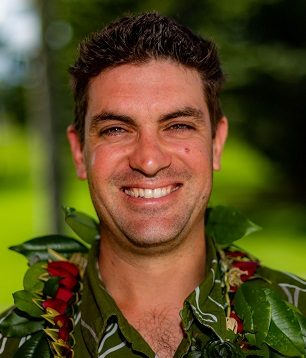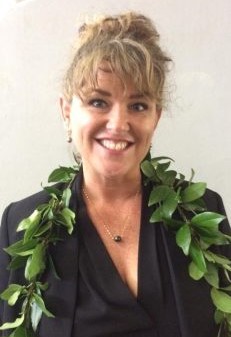Request to Change Land Use Classification for Site of Proposed Affordable Housing Project Moves Forward
The Hawai’i County Council on Wednesday approved the first reading of a land-use amendment request so an affordable housing project in Hilo can move forward.
Bill 101 would amend the county’s state land-use boundary maps to change the classification of a vacant 9.09-acre parcel on the north side of Mohouli Street in Hilo, just west of the intersection with Komohana Street, from agricultural to urban. The change was requested by the Hawai’i Island Community Development Corporation, a nonprofit focused on assisting low- to moderate-income residents of the island obtain affordable housing, which intends to develop the 90-unit Hale Ola O Mohouli Affordable Housing Project on the site.
The Council approved the first reading of Bill 101 by a 7-2 vote, with members Matt Kanealiʻi-Kleinfelder and Rebecca Villegas dissenting on grounds that they need more clarity on some of the finer points of the proposed plan.
The project is being designed as a “pocket neighborhood,” according to information presented by HICDC Chief of Operations Jeremy McComber during a Jan. 5 meeting of the County Council Planning Committee. It will integrate senior housing with low-income housing. McComber told council members during that meeting that the design is intentional to encourage socializing and recreation between the units, fostering a tight-knit community.
The requested amendment to the state land use map is necessary for the project to move forward. It received favorable recommendations from the Windward Planning Commission at its November meeting and from the County Council Committee on Planning during a meeting earlier this month.
According to information presented to the Windward Planning Commission during its Nov. 4 meeting, construction of the proposed project is anticipated to begin early this year. The total cost of the build-out is estimated between $30 million and $40 million.
Kanealiʻi-Kleinfelder questioned the original scope of the project because of a discrepancy between a resolution passed several years ago, which stated a different number of proposed units for the plan.
The resolution Kanealiʻi-Kleinfelder questioned, Resolution 476-18, authorized negotiation of a 75-year lease for the property, according to county Planning Department Director Zendo Kern. That resolution, passed by the council in 2018, said the development corporation would be seeking 200 units for affordable senior housing, not the 90-unit project being discussed Wednesday.
Kern said his understanding is that the development corporation can plan for up to the 200 units, but there’s some flexibility within those numbers.
Kanealiʻi-Kleinfelder asked county Corporation Counsel Elizabeth Strance what weight the resolution, including the lease agreement based on the 200-unit figure, has on Bill 101 and any other measures that could come later in connection to the proposed project.
“I haven’t had a chance to analyze the question,” Strance said. “If it’s something that is important to the council in knowing, I’d like the opportunity to evaluate it and have one of my colleagues weigh in.”
Kaneali’i-Kleinfelder asked McComber what happened that changed the project from 200 units of affordable senior housing to 90 units of affordable housing.
“At the time that we secure property with the county, if it comes through an executive order, we have to provide a preliminary narrative in order to secure that property,” McComber said. “At the time, we do a very cursory review of the site to determine what our maximum capacity would be for the site and there are various factors we have to consider.”
Those factors include cost feasibility and any environmental requirements.
“When you go down the road of doing an environmental review, your review has to account for the maximum number of units you’re going to be building on the project,” McComber said. “So we allow ourselves flexibility in the number but still keeping what the max capacity for the site could be.”
He said following securing the property, based on the design and what the community can accept, the real number is determined and then that is checked with the financial feasibility of the project and what level of financing can be secured.
“So that’s sort of how we scaled from the 200 number to the 90 number we’re at today,” McComber said.
Kanealiʻi-Kleinfelder also raised concerns about driveways for the proposed complex and traffic flow, especially with existing senior housing and the fire department’s dispatch center nearby. McComber and Kern told Kaneali’i-Kleinfelder that an analysis was done by a traffic engineer who determined the best traffic patterns and flows in and out of the proposed complex.
“These are good questions, but ultimately, they’ve come up with a better project than what they had originally contemplated,” said Councilmember Aaron Chung.
Villegas also asked if the county needed to do a request for proposals for this kind of development. Keith Kato, HICDC executive director, answered that from his understanding there is a section in the county code that authorizes the direct lease of land to a nonprofit and therefore an RFP would not be necessary.
“And then my question would be also, just for a broader understanding, if we aren’t using RFPs for this, then how are developers, contractors and builders are selected?” Villegas asked. “As it is before us now, and we are at such pivotal times when it comes to state land and county land and the need for affordable housing, I think it behooves all of us as council members and members of the county to gain a better understanding of what the process is on this as it relates to RFPs and how things are chosen or selected.”
Strance said she was taking notes about all of the questions council members raised during Wednesday’s meeting and would take them under advisement to get the answers.
The second and final reading of the bill is scheduled to go before the council at its Feb. 9 meeting. If approved, the bill then goes to Mayor Mitch Roth for his signature.
Sponsored Content
Comments










